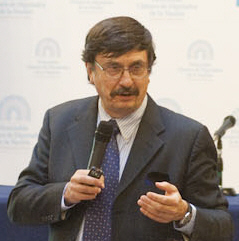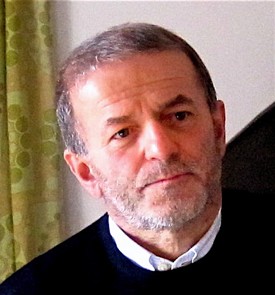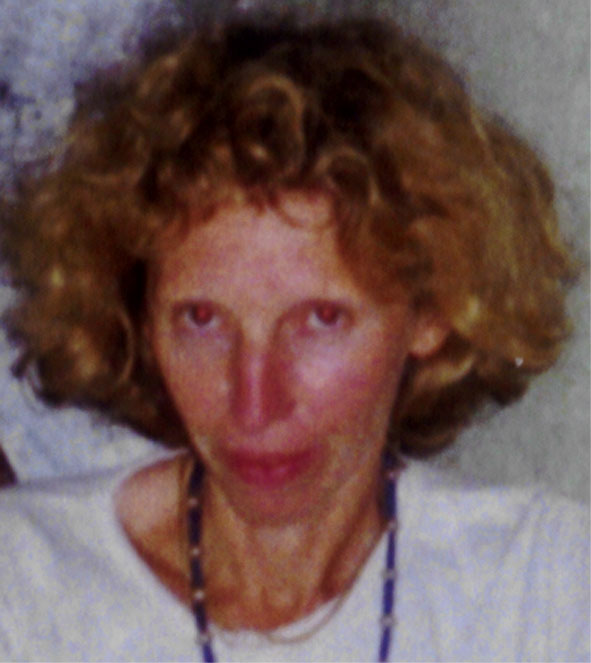Studying at the University of Verona
Here you can find information on the organisational aspects of the Programme, lecture timetables, learning activities and useful contact details for your time at the University, from enrolment to graduation.
Academic calendar
The academic calendar shows the deadlines and scheduled events that are relevant to students, teaching and technical-administrative staff of the University. Public holidays and University closures are also indicated. The academic year normally begins on 1 October each year and ends on 30 September of the following year.
Course calendar
The Academic Calendar sets out the degree programme lecture and exam timetables, as well as the relevant university closure dates..
| Period | From | To |
|---|---|---|
| I semestre | Oct 4, 2010 | Jan 31, 2011 |
| II semestre | Mar 1, 2011 | Jun 15, 2011 |
| Session | From | To |
|---|---|---|
| Sessione straordinaria | Feb 1, 2011 | Feb 28, 2011 |
| Sessione estiva | Jun 16, 2011 | Jul 29, 2011 |
| Sessione autunnale | Sep 1, 2011 | Sep 30, 2011 |
| Session | From | To |
|---|---|---|
| Sessione autunnale | Oct 13, 2010 | Oct 13, 2010 |
| Sessione straordinaria | Dec 16, 2010 | Dec 16, 2010 |
| Sessione invernale | Mar 16, 2011 | Mar 16, 2011 |
| Sessione estiva | Jul 20, 2011 | Jul 20, 2011 |
| Period | From | To |
|---|---|---|
| All Saints | Nov 1, 2010 | Nov 1, 2010 |
| National holiday | Dec 8, 2010 | Dec 8, 2010 |
| Christmas holidays | Dec 22, 2010 | Jan 6, 2011 |
| Easter holidays | Apr 22, 2011 | Apr 26, 2011 |
| National holiday | Apr 25, 2011 | Apr 25, 2011 |
| Labour Day | May 1, 2011 | May 1, 2011 |
| Local holiday | May 21, 2011 | May 21, 2011 |
| National holiday | Jun 2, 2011 | Jun 2, 2011 |
| Summer holidays | Aug 8, 2011 | Aug 15, 2011 |
Exam calendar
Exam dates and rounds are managed by the relevant Science and Engineering Teaching and Student Services Unit.
To view all the exam sessions available, please use the Exam dashboard on ESSE3.
If you forgot your login details or have problems logging in, please contact the relevant IT HelpDesk, or check the login details recovery web page.
Should you have any doubts or questions, please check the Enrollment FAQs
Academic staff
Cecchi Franco
 franco.cecchi@univr.it
franco.cecchi@univr.it
 045 802 7964 - 7965
045 802 7964 - 7965
Gnaccarini Claudio
 claudio.gnaccarini@univr.it
claudio.gnaccarini@univr.it
 bruno.gobbi@univr.it
bruno.gobbi@univr.it
Marastoni Corrado
 maraston@math.unipd.it
maraston@math.unipd.it
Mazzi Ulderico
 ulderico.mazzi@univr.it
ulderico.mazzi@univr.it
Minelli Ida Germana

Monaco Ugo Luigi
 hugo.monaco@univr.it
hugo.monaco@univr.it
 045 802 7903; Lab: 045 802 7907 - 045 802 7082
045 802 7903; Lab: 045 802 7907 - 045 802 7082
Nodari Luca
 045 802 7943
045 802 7943
Spena Angelo
 angelo.spena@univr.it
angelo.spena@univr.it
 045 683 5623
045 683 5623

Vallini Giovanni
 giovanni.vallini@univr.it
giovanni.vallini@univr.it
 045 802 7098; studio dottorandi: 045 802 7095
045 802 7098; studio dottorandi: 045 802 7095
Study Plan
The Study Plan includes all modules, teaching and learning activities that each student will need to undertake during their time at the University.
Please select your Study Plan based on your enrollment year.
1° Year
| Modules | Credits | TAF | SSD |
|---|
2° Year activated in the A.Y. 2011/2012
| Modules | Credits | TAF | SSD |
|---|
3° Year activated in the A.Y. 2012/2013
| Modules | Credits | TAF | SSD |
|---|
| Modules | Credits | TAF | SSD |
|---|
| Modules | Credits | TAF | SSD |
|---|
| Modules | Credits | TAF | SSD |
|---|
Legend | Type of training activity (TTA)
TAF (Type of Educational Activity) All courses and activities are classified into different types of educational activities, indicated by a letter.
General and Inorganic Chemistry [Cognomi A-E] (2010/2011)
Teaching code
4S00136
Teacher
Coordinator
Credits
6
Also offered in courses:
- Basis of general chemistry of the course Bachelor's degree in Bioinformatics
Language
Italian
Scientific Disciplinary Sector (SSD)
CHIM/03 - GENERAL AND INORGANIC CHEMISTRY
Period
I semestre dal Oct 4, 2010 al Jan 31, 2011.
Learning outcomes
The goal of the course is to learn the main concepts of General Chemistry and some important concepts of Inorganic and Physical Chemistry.
Chemical and physical phenomena. Fundamental laws of Chemistry. Atomic structure of matter. Periodic properties. Chemical reactions.
Stoichiometry. Gases, solids, liquids. The chemical bond.
Thermochemistry and thermodynamics. Phase diagrams and properties of solutions. Chemical kinetics. Chemical equilibrium. Equilibria in aqueous solutions. Electrochemistry.
Program
- Introduction, properties, measurements and their units
- Elements, atoms and compounds
- Nomenclature of inorganic compounds
- Types of reactions: precipitations, acids and bases, redox
- General principles of stoichiometry
- Gases
- Termochemistry: internal energy, enthalpy, reaction enthalpies
- Atomic structure; Bohr's model, quantum mechanics
- Periodic properties: atomic and ionic radii, ionization energy,
electronic affinity, electronegativity
- Covalent bond
- Polarity of the bonds
- Molecular shape: VSEPR theory
- Hybridisation
- Van der Waals forces
- Properties of liquids
- Properties of solids
- Solutions; concentrations
- Colligative properties
- Chemical kinetics; reaction mechanisms
- Chemical equilibria
- Acids and bases and their solutions; hydrolysis; buffer solutions
- Solubility equilibria
- Spontaneous reactions; free energy
- Electrochemical cells
- Electrolysis
- Nuclear chemistry and radiochemistry
| Author | Title | Publishing house | Year | ISBN | Notes |
|---|---|---|---|---|---|
| Atkins PW, Jones L | Fondamenti di chimica generale (Edizione 2) | Zanichelli, 2a edizione | 2018 | 8808670120 |
Examination Methods
The examination consists of a written exercise, based on a series of questions on the theory of General Chemistry.
Type D and Type F activities
Modules not yet included
Career prospects
Module/Programme news
News for students
There you will find information, resources and services useful during your time at the University (Student’s exam record, your study plan on ESSE3, Distance Learning courses, university email account, office forms, administrative procedures, etc.). You can log into MyUnivr with your GIA login details: only in this way will you be able to receive notification of all the notices from your teachers and your secretariat via email and soon also via the Univr app.
Graduation
List of theses and work experience proposals
| theses proposals | Research area |
|---|---|
| Studio delle proprietà di luminescenza di lantanidi in matrici proteiche | Synthetic Chemistry and Materials: Materials synthesis, structure-properties relations, functional and advanced materials, molecular architecture, organic chemistry - Colloid chemistry |
| Multifunctional organic-inorganic hybrid nanomaterials for applications in Biotechnology and Green Chemistry | Synthetic Chemistry and Materials: Materials synthesis, structure-properties relations, functional and advanced materials, molecular architecture, organic chemistry - New materials: oxides, alloys, composite, organic-inorganic hybrid, nanoparticles |
| Dinamiche della metilazione del DNA e loro contributo durante il processo di maturazione della bacca di vite. | Various topics |
| Risposte trascrittomiche a sollecitazioni ambientali in vite | Various topics |
| Studio delle basi genomico-funzionali del processo di embriogenesi somatica in vite | Various topics |
Attendance
As stated in the Teaching Regulations for the A.Y. 2022/2023, attendance is not mandatory. However, professors may require students to attend lectures for a minimum of hours in order to be able to take the module exam, in which case the methods that will be used to check attendance will be explained at the beginning of the module.

















